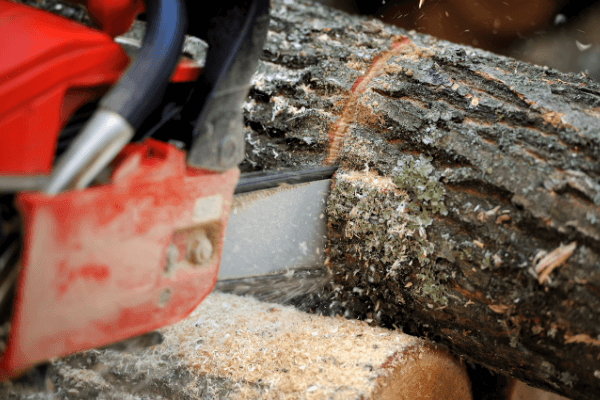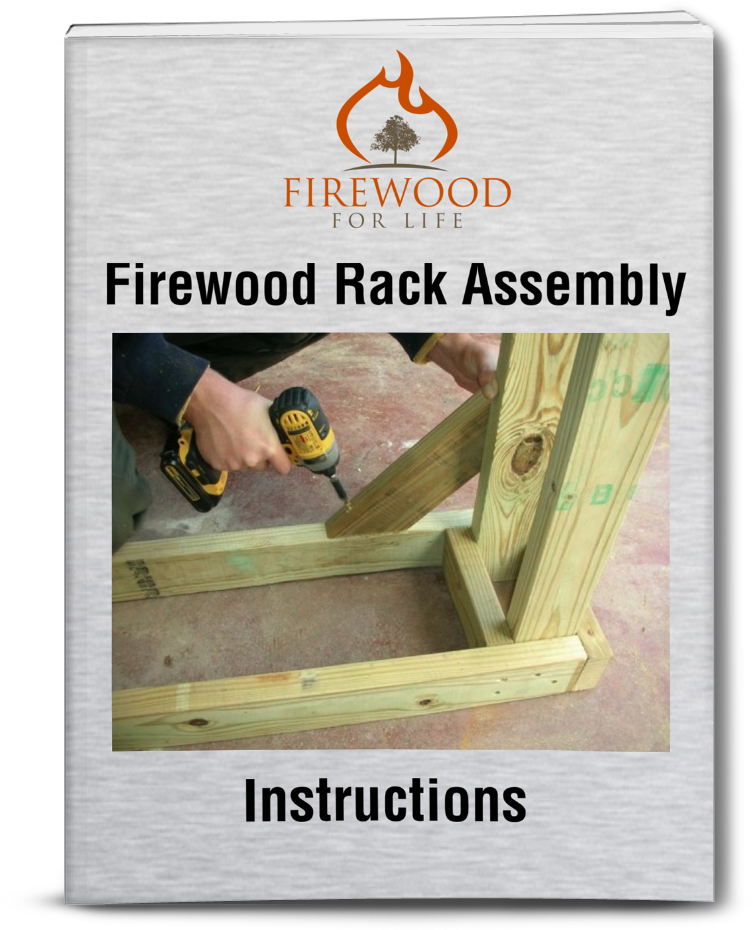- Home
- Domestic Hot Water
- Sidearm Heat Exchanger
Sidearm Heat Exchanger
This post may contain affiliate links so I earn a commission.
A sidearm heat exchanger is a device used in conjunction with an outdoor wood furnace to heat your domestic hot water.
Did you know your hot water heater accounts for about 20 percent of your monthly energy bill?
Hot water is a luxury we can't live without, but heating your household water can be expensive.
If you currently have, or plan on installing an outdoor wood furnace, a sidearm heat exchanger can be a great investment.
How do they work?
Well, they're pretty simple.
They consist of an inner copper tube (usually 3/4 inch copper pipe) and an outer tube (usually 1 3/4 inch copper pipe).
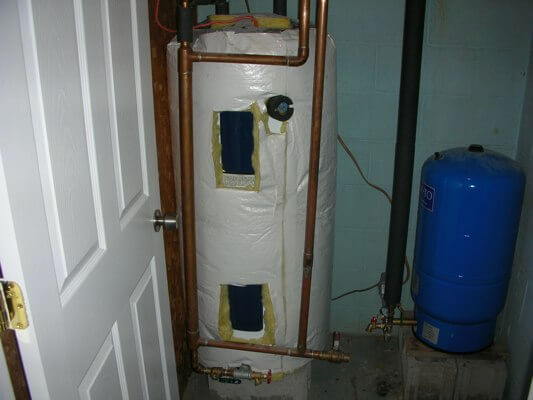
The larger tube fits over the smaller tube like a jacket.
Heat exchange takes place through a process called thermosiphon.
Thermosiphon is a method of heat exchange through convection.
By using convection, water from your hot water heater can be drawn up through your heat exchanger without the use of mechanical pumps.
The larger outer tube is plumbed into the water flow loop coming from your outdoor wood furnace.
Plumb in the heat exchanger so that the water flow goes from top to bottom, meaning the water enters the heat exchanger at the top and exits at the bottom to continue it's loop back to the wood furnace.
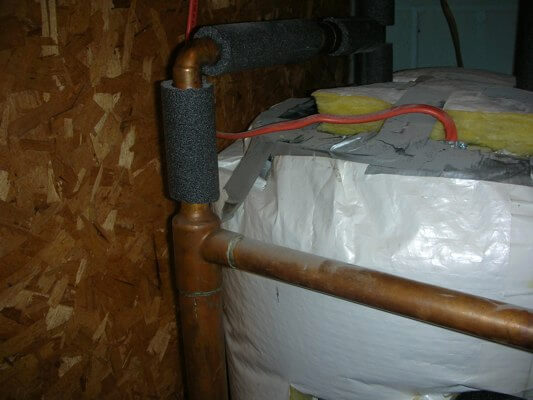
The 3/4 inner copper pipe should be plumbed directly into your hot water heater.
The installation method depends on the manufacture, but they are all relatively the same.
The bottom of the 3/4 inch pipe should be plumbed into the bottom drain of the water heater.
Using a T, you can reinstall the drain valve after you plumb in the bottom of the heat exchanger.
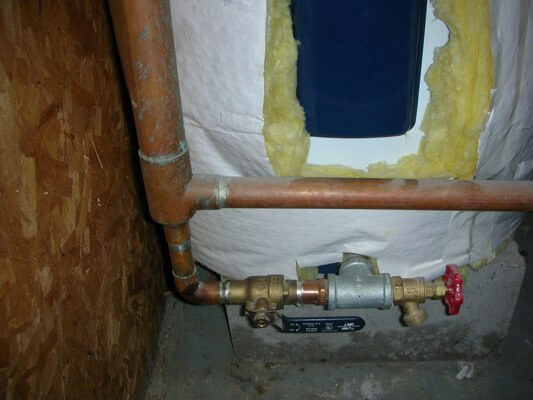
I put ball valves on the top and bottom inner pipe.
In the summer time when the outdoor wood furnace is not in use, I shut the ball valves to prevent any unwanted thermosiphon.
After shutting the valves, I turn the water heater back on allowing it to function normally.
The top 3/4 inch pipe of the heat exchanger is plumbed into the hot water outlet on top of the water heater.
This is the way the directions said to install this particular heat exchanger.
Some models suggest plumbing into the pressure relief valve.
The pressure relief valve on this hot water heater is located three quarters of the way up the tank.
This heat exchanger is 45 inches long and it actually extends past the pressure relief valve.
Plumbing into the relief valve would cause an arch in the plumbing, creating a heat trap and possibly interfering with the thermosiphon.
If you plumb into the hot water inlet DO NOT extend the heat exchanger any higher than 3-4 inches above the hot water heater.
Try to stay as level as possible to the top of the tank.
Anything higher than 3-4 inches will disrupt the thermosiphon and the heat exchanger may not work.
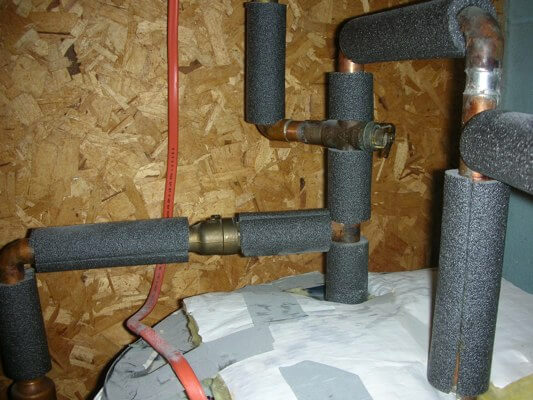
I find the heat exchanger works best when the wood furnace water is set to 180 degrees.
Anything less seems to hinder the thermosiphon.
After the heat transfer takes place, the water temperature in the hot water tank will be very hot....in fact dangerously hot.
To prevent severe scalding, install a mixer valve.
A mixer valve will mix cold water into the hot water going to your faucets, reducing the temperature.
You can see the mixer valve in this picture about 6-8 inches above the tank.
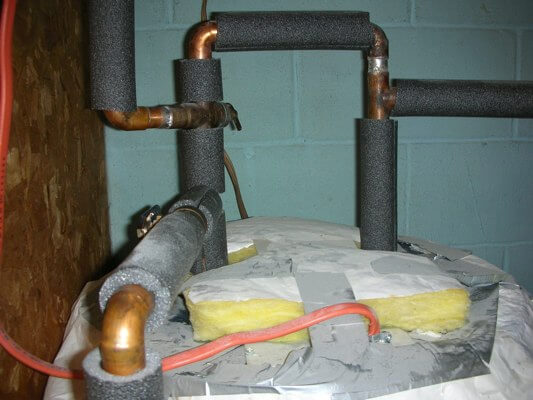
Important Tips
Newer hot water heaters have an anti-syphon valve installed in the top of the hot water exit.
It is a blue plastic valve that needs to be ripped out using a pair of needle nose pliers.
If you do not remove the anti syphon valve the thermosiphon process will not work.
If the sidearm heat exchanger is plumbed into the pressure relief valve, the blue anti syphon valve does not need to be removed.
Use as few angles and turns as possible when plumbing in the heat exchanger.
Keeping the heat exchanger between the top and bottom of the water heater and using a limited number of turns will assist the thermosiphon process.
I turn my water heater completely off when I have my wood furnace running.
This saves me on average $50 a month on my electric bill (we have an electric water heater).
Sidearm Heat Exchanger - Overall
A sidearm heat exchanger can be a great way to save money and create hot water for free.
If you're going to be running an outdoor wood furnace, why not hook up a heat exchanger?

About the Author
Obsessed with firewood, Nick is behind over 350+ of Firewood For Life's articles, as well as countless reviews, guides and YouTube videos to help readers like you reduce heating costs and create the perfect fire.
